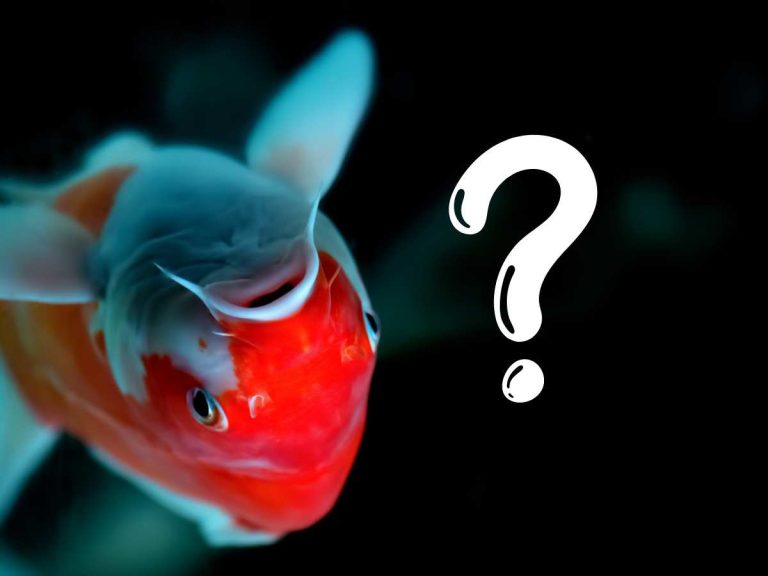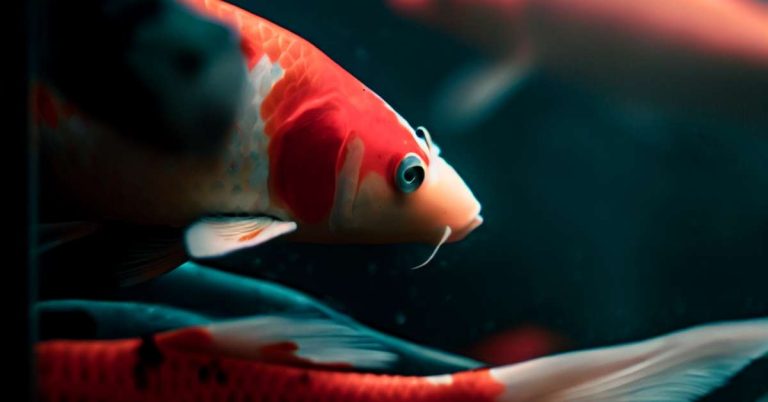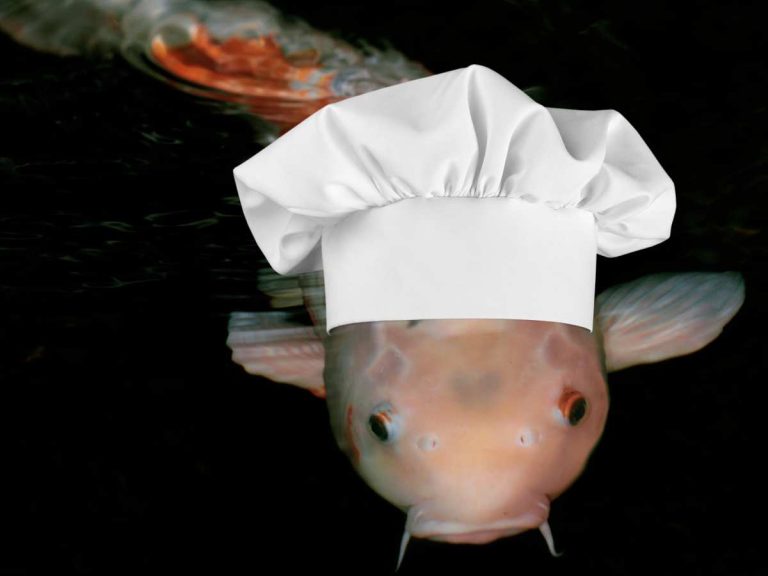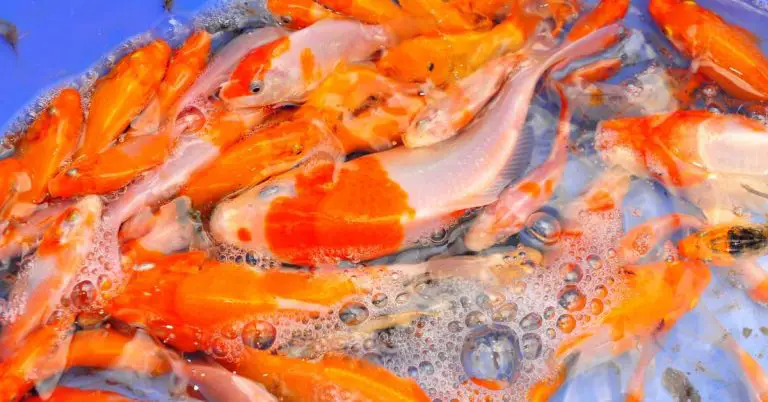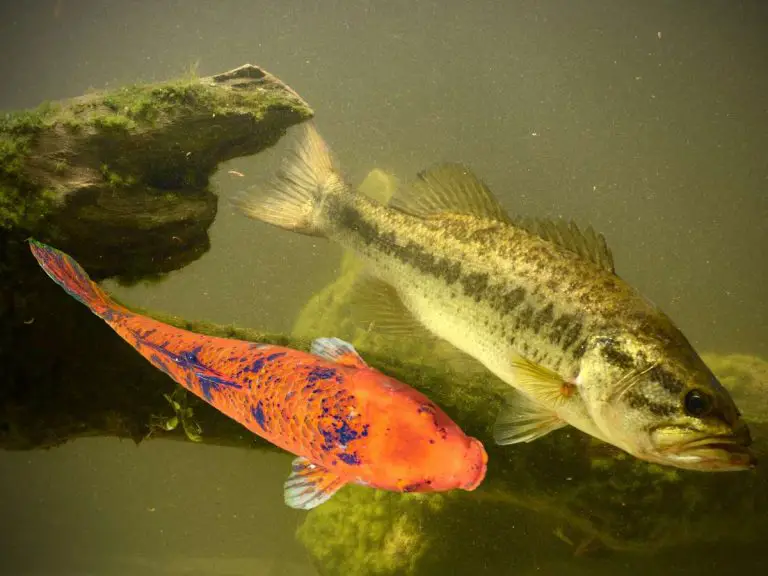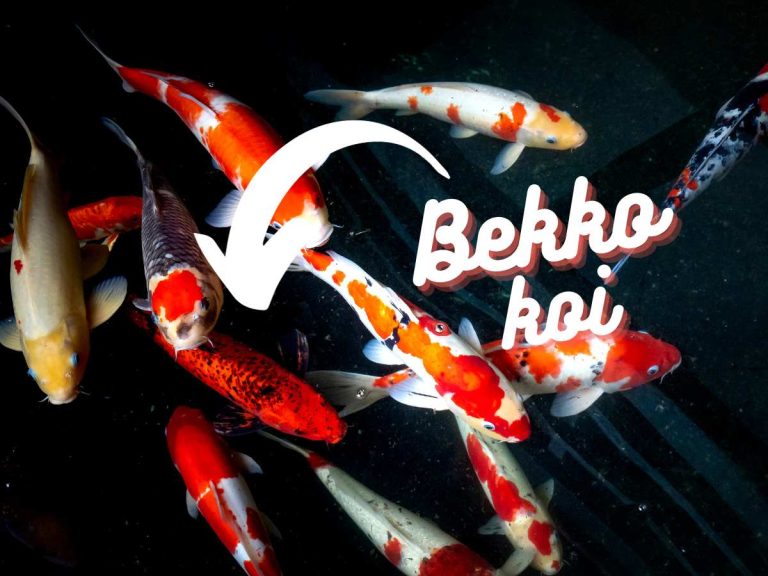Feeding Koi Carp in Winter: Expert Tips for Surviving The Cold
Are you a proud owner of koi carp? If so, do you know how to properly feed them during the colder months?
When it comes to feeding koi carp in winter, it’s essential to consider their unique dietary needs. In colder temperatures, the metabolism and behavior of koi carp change, requiring adjustments in their feeding routine. From understanding their dietary needs to adjusting feed quantities based on temperature, these beautiful fish require extra care in the winter months.
But don’t worry: in this article, we’ll walk you through everything you need to know about feeding koi carp in winter. From a winter feeding schedule to the best diet options for koi fish, you’ll find plenty of valuable information here. So, let’s dive in and make sure your koi carp stay healthy and happy throughout the winter!
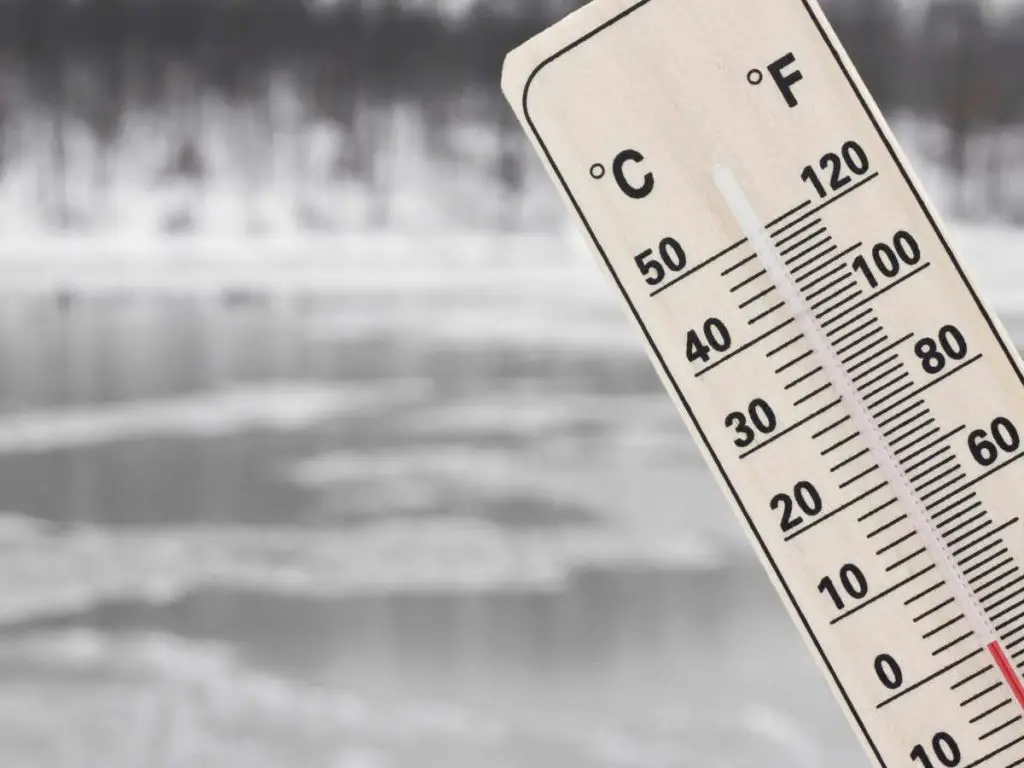
Feeding Koi Fish In Winter
Proper winter feeding is crucial for the survival and well-being of koi carp. These beautiful fish need special care during the colder months to maintain their health and condition. Without a suitable winter feeding regimen, koi carp may struggle to stay alive and may suffer from various health issues.
During winter, the metabolism and behavior of koi carp undergo significant changes. As the water temperature drops, their metabolic rate decreases, leading to reduced appetite and slower digestion. This change in metabolism is a natural response to the colder environment and serves to conserve energy.
However, despite the reduced appetite, it is vital to ensure that koi carp receive adequate nutrition during winter. Proper feeding will help them maintain their immune system, energy levels, and overall health. By providing the right diet and feeding schedule, you can help your koi carp thrive even in the colder months.
Monitoring your fish’s health and condition during winter is essential. Pay attention to any signs of malnutrition or poor well-being, such as reduced activity, weight loss, or a weakened immune system. Feeding koi carp correctly in winter will not only help them survive, but it will also promote their growth and ensure that they are vibrant and healthy when spring arrives.
Understanding koi carp dietary needs in winter
During winter, it’s important to understand the dietary needs of your koi carp in order to ensure their well-being and maintain their health. The cold temperatures can significantly impact the metabolism and behavior of these beautiful fish.
Koi carp do not have the same level of activity during winter as they do in warmer months. Their metabolism slows down, causing them to have a reduced appetite. This decrease in activity and appetite is a natural response to the colder temperatures. As a result, koi carp require less food during the winter months.
It’s crucial to note that the temperature of the water plays a vital role in determining the nutritional requirements of your koi carp. As the water temperature drops, so does their metabolic rate. This means that their bodies require less energy to function. Therefore, feeding them the same amount of food as you would in summer can lead to overfeeding, which can result in health issues and poor water quality.
Changes in fish metabolism and behavior during winter
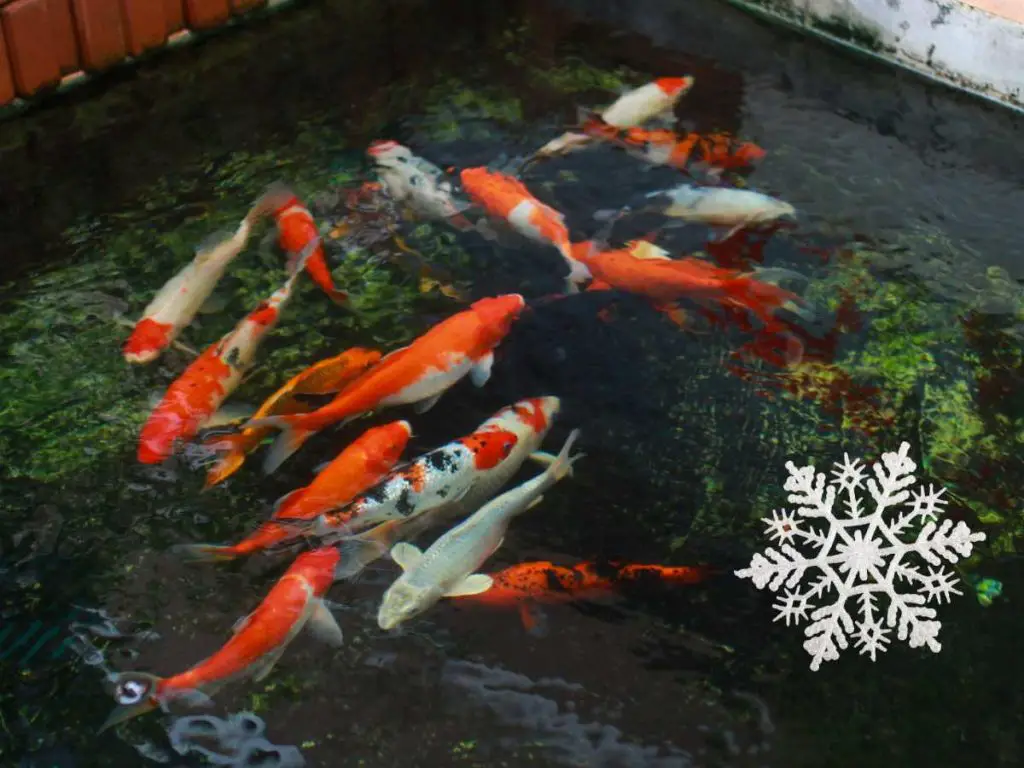
During winter, your koi carp’s metabolism slows down due to the colder temperatures. This means that their bodies are not producing as much energy or processing food as efficiently as they do in warmer months. It’s important to be mindful of this change and adjust their feeding accordingly.
In addition to their reduced metabolism, koi carp also exhibit different behavior patterns in winter. They tend to be less active and seek out warmer areas in the pond to conserve energy. This reduction in activity means that they require less food to sustain themselves.
Understanding these changes in metabolism and behavior is crucial for providing the proper care and nutrition for your koi carp during winter. Be mindful of their reduced appetite and adjust their feeding schedule and quantities accordingly.
How to look after koi carp in winter
When it comes to feeding your koi carp during the winter months, it’s essential to establish a proper feeding schedule to ensure their health and well-being.
First and foremost, it’s important to adjust the number of daily feedings during winter. Unlike in warmer months, koi carp have a slower metabolism in colder temperatures, so they require fewer feedings. Generally, it is recommended to feed them once or twice a day.
The ideal feeding times during winter are in the late morning and early afternoon. This allows the koi carp enough time to digest their food before it gets colder in the evening. By feeding them during the warmer part of the day, you ensure that their bodies have sufficient time to utilize the nutrients.
| Aspect | Details |
|---|---|
| Metabolism & Behavior | – Metabolism slows down with colder temperatures. – Reduced activity and appetite. |
| Feeding Frequency | – Feed once or twice a day. – Ideal feeding times: late morning and early afternoon. |
| Feed Quantity Based on Temperature | – Above 10°C: Feed normally. – 5-10°C: Feed sparingly. – Below 5°C: Cease feeding. |
| Dietary Needs | – Specialized Winter Koi Carp Food. – Natural options: Wheat Germ, Leafy Greens, Peas, Fruits (in moderation). |
| Feeding Techniques | – Use Sinking Pellets. – Pre-soak food. – Feed small amounts multiple times. – Monitor feeding duration. – Adjust based on water temperature. – Observe koi behavior. – Maintain water quality. |
| Freezing Prevention | – Install a Floating Heater or De-icer. Use an Aerator or Air Stone. Consider a Heated Feeding Ring. Create a hole in case of complete freeze. |
| Water Quality & Filtration | – Monitor and clean filters regularly. Test water for ammonia, nitrite, nitrate, and pH. |
| Monitoring Health | – Observe behavior and appearance. Check for signs of stress, discoloration, sores, or abnormalities. |
Adjust feed quantities based on temperature
The amount of food you provide to your koi carp should also be adjusted according to the water temperature. As the temperature drops, their metabolic rate decreases, leading to a decrease in their appetite and digestion. It’s crucial to not overfeed them, as it can lead to health issues and water pollution.
Here’s a helpful table that provides feeding guidelines according to water temperature:
| Water Temperature (°C) | Feed Quantity |
|---|---|
| Above 10°C | Feed normally |
| 5-10°C | Feed sparingly |
| Below 5°C | Cease feeding |
When to Stop Feeding Koi Carp in Winter
One of the most frequently asked questions by koi enthusiasts is, “When should I stop feeding my koi during the winter months?” The answer to this question is closely tied to water temperature and the metabolic rate of the koi.
As the water temperature drops, the metabolism of koi carp slows down. This reduced metabolic rate means they require less food and digest it more slowly. Overfeeding during this period can lead to undigested food sitting in their stomachs, which can cause health complications.
Water Temperature Guide for Feeding Koi in Winter:
- Above 10°C (50°F): Koi are still relatively active and can be fed a regular diet, albeit in reduced quantities. Their digestive system can handle regular koi food, but it’s a good idea to start introducing easily digestible foods like wheat germ.
- Between 10°C (50°F) and 5°C (41°F): Koi’s metabolism is significantly slower. It’s recommended to feed them specially formulated winter koi food, which is designed to be easily digestible. Feed sparingly, and always ensure they eat all the food you provide.
- Below 5°C (41°F): At this temperature, it’s best to cease feeding altogether. Koi enter a state of near hibernation, and their digestive system is almost at a standstill. Any food consumed might not be digested, which can lead to potential health issues.
It’s essential to use a pond thermometer to monitor the water temperature accurately. Relying on air temperature or guesswork can lead to incorrect feeding schedules.
Additional Tips:
- Monitor Your Koi: Even with the temperature guidelines, always observe your koi’s behavior. If they show little interest in food or if there’s uneaten food left after a few minutes, it might be a sign to reduce the feeding frequency or quantity.
- Gradual Transition: As winter approaches and you notice a drop in temperature, start transitioning your koi to a winter diet gradually. This will help their digestive system adjust to the new food type and reduce the risk of digestive issues.
- Spring Feeding: Just as in winter, the transition to spring requires careful monitoring of water temperature. As the water warms up and consistently stays above 10°C (50°F), you can gradually reintroduce regular koi food and increase feeding frequency.
Understanding the relationship between water temperature and koi metabolism is crucial for determining when to stop feeding koi in winter. By following the guidelines above and regularly monitoring your pond’s temperature, you can ensure the health and well-being of your koi during the colder months.
Best winter diet for koi fish
During winter, it’s essential to provide your koi carp with the proper diet to ensure their health and well-being. While their dietary needs may change during the colder months, there are still several options to consider.
When it comes to the winter diet for koi fish, it’s important to focus on providing them with the necessary nutrients to maintain their health. A balanced diet will help to support their immune system and overall vitality.
Types of food suitable for koi carp in colder months
Remember, during colder months, the koi’s digestive system slows down significantly. It’s crucial to feed them foods that are easily digestible to prevent any potential digestive issues.
Specialized Winter Koi Carp Food: Many high-quality commercial koi food brands offer specialized winter formulas. It’s essential to choose reputable brands that have specifically designed their food for colder months. These formulas typically contain ingredients that are easily digestible, ensuring that the koi’s metabolism, which slows down in colder temperatures, can efficiently process the food. Additionally, these winter feeds are packed with essential nutrients that help koi maintain their health during the chilly season.
Natural Food Options for Winter: For those who lean towards a more natural feeding approach, there’s a variety of suitable options for koi during the colder months. Some recommended natural foods include:
- Wheat Germ: Easily digestible and often a primary ingredient in many commercial winter koi foods.
- Leafy Greens: Spinach and lettuce are good choices. They offer essential vitamins and are gentle on the koi’s digestive system.
- Peas: A great source of vitamin C and other nutrients. Ensure they are deshelled and boiled or blanched before feeding.
- Fruits: In moderation, fruits like oranges and watermelon can be given. They provide vitamin C, which can boost the koi’s immune system. However, they should be fed sparingly as koi have a limited ability to process sugars.
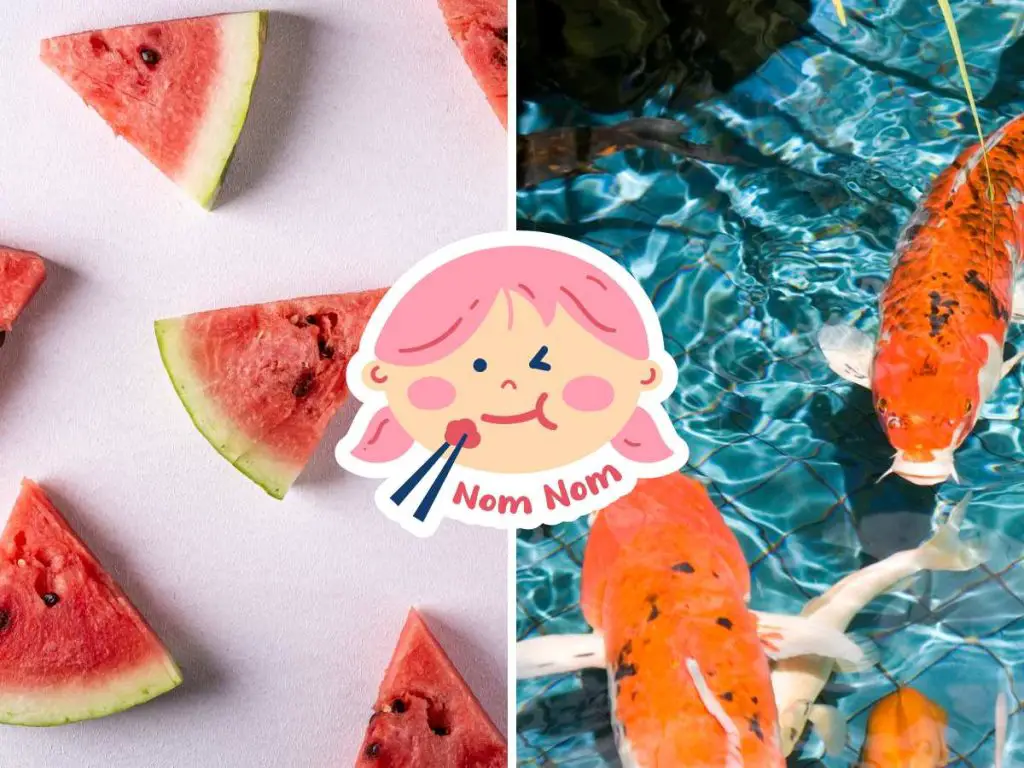
Feeding tips for koi carp during winter
Feeding koi carp during the winter requires some special attention and care. It’s important to avoid overfeeding and water pollution, as well as consider using specialized winter feeding techniques.
Avoid overfeeding and water pollution
During the winter, koi carp’s metabolism slows down, and they require less food than in warmer months. Overfeeding can lead to health issues and water pollution in the pond. It’s best to feed them small amounts of food multiple times a day instead of one large feeding. This helps prevent uneaten food from decaying and polluting the water.
Consider using specialized winter feeding techniques
There are various winter feeding techniques that can help minimize nutrient loss and ensure your koi carp get the nutrition they need. One technique is to use sinking pellets instead of floating ones. Sinking pellets sink to the bottom of the pond, making it easier for the koi carp to find and eat them.
Another technique is to pre-soak the food before feeding. By soaking the food, it becomes softer and easier for the koi carp to digest. This can be especially beneficial during the winter when their digestive system is not as efficient.
7 Winter feeding techniques to minimize nutrient loss
When their digestion slows, it can be harder to ensure your koi are getting the nutrients they need. That’s why it’s crucial to adapt your feeding techniques during this period to ensure the koi receive the necessary nutrients without causing waste or water pollution. Here are seven winter feeding techniques designed to minimize nutrient loss:
- Use Sinking Pellets: Unlike floating pellets that can drift away and go uneaten, sinking pellets descend to where the koi are more likely to be during the cold months. This ensures that the food reaches them directly, reducing the chances of nutrient loss.
- Pre-soak the Food Before Feeding: Pre-soaking the koi food can make it easier for the fish to digest. Since their metabolism is slower in colder temperatures, this step ensures that the food is soft and palatable, aiding in quicker digestion and absorption of nutrients.
- Feed Small Amounts Multiple Times a Day: Instead of giving a large quantity of food at once, it’s advisable to feed koi small amounts multiple times throughout the day. This approach ensures that the fish consume all the food, minimizing waste and ensuring they get a steady supply of nutrients.
- Ensure All Food is Consumed Within a Few Minutes: Monitoring the feeding process is essential. If the koi don’t consume all the food within a few minutes, it’s a sign that you might be overfeeding. Excess food can decay in the pond, leading to water pollution and nutrient loss.
- Monitor Water Temperature: The feeding frequency and amount should be adjusted based on the water temperature. As the temperature drops, reduce the feeding frequency.
- Observe Your Koi’s Behavior: Always pay attention to your koi’s behavior. If they seem less interested in food or if there’s uneaten food left, it might be time to adjust the feeding amount or schedule.
- Maintain Water Quality: Regularly check the water quality during winter. Excess food can lead to ammonia spikes, which can be harmful to koi. Using a pond filter and conducting periodic water changes can help maintain a healthy environment for your fish.
Ultimately, feeding koi during winter simply requires a bit more attention and care. By following the above techniques and tips, you can ensure that your koi remain healthy and vibrant, even in the colder months.
Techniques to prevent freezing of feeding areas
Koi ponds can be a beautiful and serene addition to any landscape, but they require special attention during the colder months. One of the primary concerns for koi keepers during winter is the freezing of the pond’s surface, especially the feeding areas. A frozen pond can lead to a lack of oxygen and hinder the essential gas exchange, potentially putting the koi at risk.
Meanwhile, the following techniques techniques will help ensure that your koi pond remains a safe and hospitable environment throughout the winter:
- Install a Floating Heater or De-icer: These devices are designed to keep a section of the pond from freezing. They float on the water’s surface and provide just enough heat to prevent ice formation around them, ensuring that there’s always an open area for feeding and gas exchange.
- Utilize an Aerator or Air Stone: Keeping the water moving and oxygenated can prevent ice from forming. An aerator or air stone introduces bubbles into the pond, promoting water circulation and increasing oxygen levels. This not only prevents freezing but also ensures that the koi have a sufficient oxygen supply.
- Consider a Heated Feeding Ring or Platform: These specialized devices are designed to keep the feeding area free from ice. By providing a localized heat source, they ensure that the food remains accessible to the koi and doesn’t get trapped under a layer of ice.
- Create a Small Hole in Case of Complete Freeze: If, despite your best efforts, the pond freezes over, it’s essential to create a small hole in the ice. This hole allows for gas exchange, ensuring that harmful gases can escape and oxygen can enter the pond. Remember, never use force or sharp objects to break the ice, as the shockwaves can harm the koi. Instead, use warm water to melt a section of the ice gently.
Additional considerations for feeding koi carp in winter
When it comes to feeding koi carp in winter, there are a few additional considerations to keep in mind. These will ensure the health and well-being of your fish during the colder months.
Water quality and filtration management
Maintaining good water quality is absolutely critical during winter. Cold water can affect the efficiency of your filtration system, so it’s important to monitor and clean your filters regularly. This will help to remove waste and maintain optimal water conditions for your koi carp.
Additionally, make sure to test the water regularly for parameters such as ammonia, nitrite, nitrate, and pH. Cold water can sometimes cause fluctuations in these levels, so it’s essential to address any imbalances promptly.
Monitoring fish behavior and other health indicators
During winter, it’s essential to keep a close eye on your koi carp and monitor their behavior and health indicators. Watch for any signs of stress, such as sluggishness, loss of appetite, or abnormal swimming patterns.
In addition, pay attention to any changes in your fish’s appearance, including any discoloration, sores, or abnormalities. These can be indicators of health issues that may require immediate attention.
Regularly observe the quality of their fins and scales as well. Any signs of damage or deterioration could be a sign of poor water conditions or nutritional deficiencies.
Adjusting feeding practices for individual fish and pond conditions
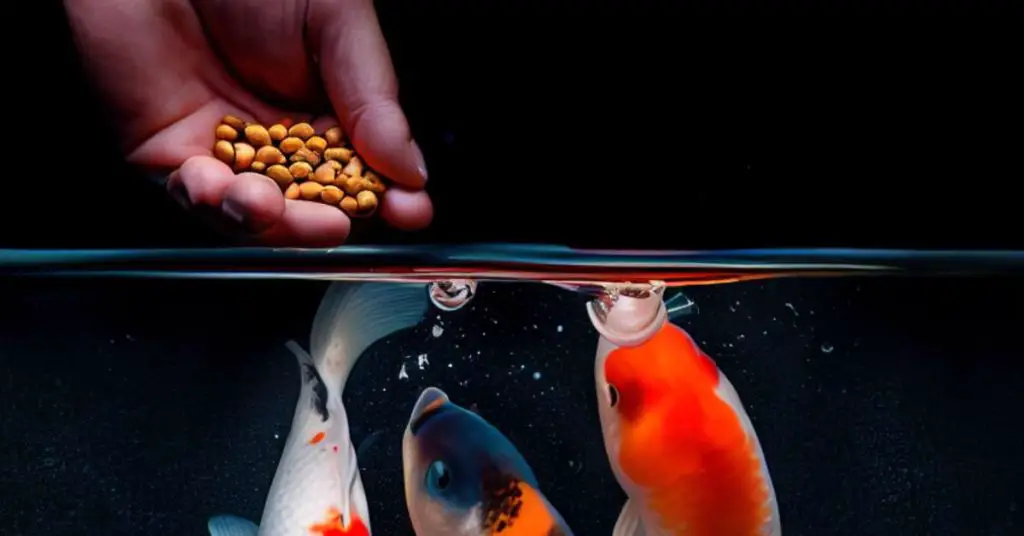
Each koi carp is unique, and their dietary needs may vary based on factors such as age, size, and overall health. It’s important to observe your fish and adjust feeding practices accordingly.
Some koi may naturally have a larger appetite, while others may require smaller, more frequent feedings. Pay attention to individual feeding behavior and adjust the feeding schedule and quantities as needed.
Additionally, consider the specific conditions of your pond. If your pond is heavily stocked or has a high fish load, it may be necessary to adjust feeding practices to prevent overfeeding and excessive nutrient buildup in the water.
Remember, a well-fed and healthy koi carp will be better equipped to handle the challenges of winter. By considering these additional factors and adjusting your feeding practices accordingly, you can ensure the well-being of your fish and enjoy their vibrant colors and graceful presence all year round.
Already thinking about the spring? Don’t miss our guide to koi spawning!
Feed koi carp the right way when it’s cold outside
Feeding your koi carp properly during winter is crucial for their survival and overall well-being. By understanding their dietary needs and implementing a winter feeding schedule, you can ensure that your fish remain healthy and in good condition even during the colder months.
Here are the main points covered in this article:
- Proper winter feeding is essential for the survival and well-being of koi carp.
- Understanding the changes in fish metabolism and behavior during winter is important for meeting their nutritional requirements.
- Feeding frequency, timing, and quantities should be adjusted based on the water temperature.
- A variety of high-quality commercially available koi carp food brands and natural food options are suitable for winter feeding.
- Avoid overfeeding to prevent water pollution and consider using specialized winter feeding techniques.
- Monitoring water quality, fish behavior, and health indicators is necessary for proper feeding management.
- Individual fish and pond conditions may require specific adjustments to feeding practices.
Remember, caring for your koi carp in winter is not just about keeping them fed, but also ensuring they have a balanced and nutritious diet. By following the guidelines and tips provided in this article, you can enjoy the beauty of your koi carp all year round.
Related Questions
Can koi carp survive without feeding during winter?
Yes, koi carp have the ability to survive without feeding during winter. As the water temperature drops, their metabolism slows down, and they enter a state of hibernation. However, it is important to note that proper feeding during winter is essential for maintaining their health and well-being.
Can I feed my koi carp regular fish food during winter?
It is best to avoid feeding regular fish food to koi carp during winter. Koi carp have specific nutritional requirements during colder months, and their regular food may not meet those needs. Opt for high-quality commercially available koi carp food or natural food options that are appropriate for winter feeding. These foods are specially formulated to provide the necessary nutrients to keep your koi carp healthy and thriving.

